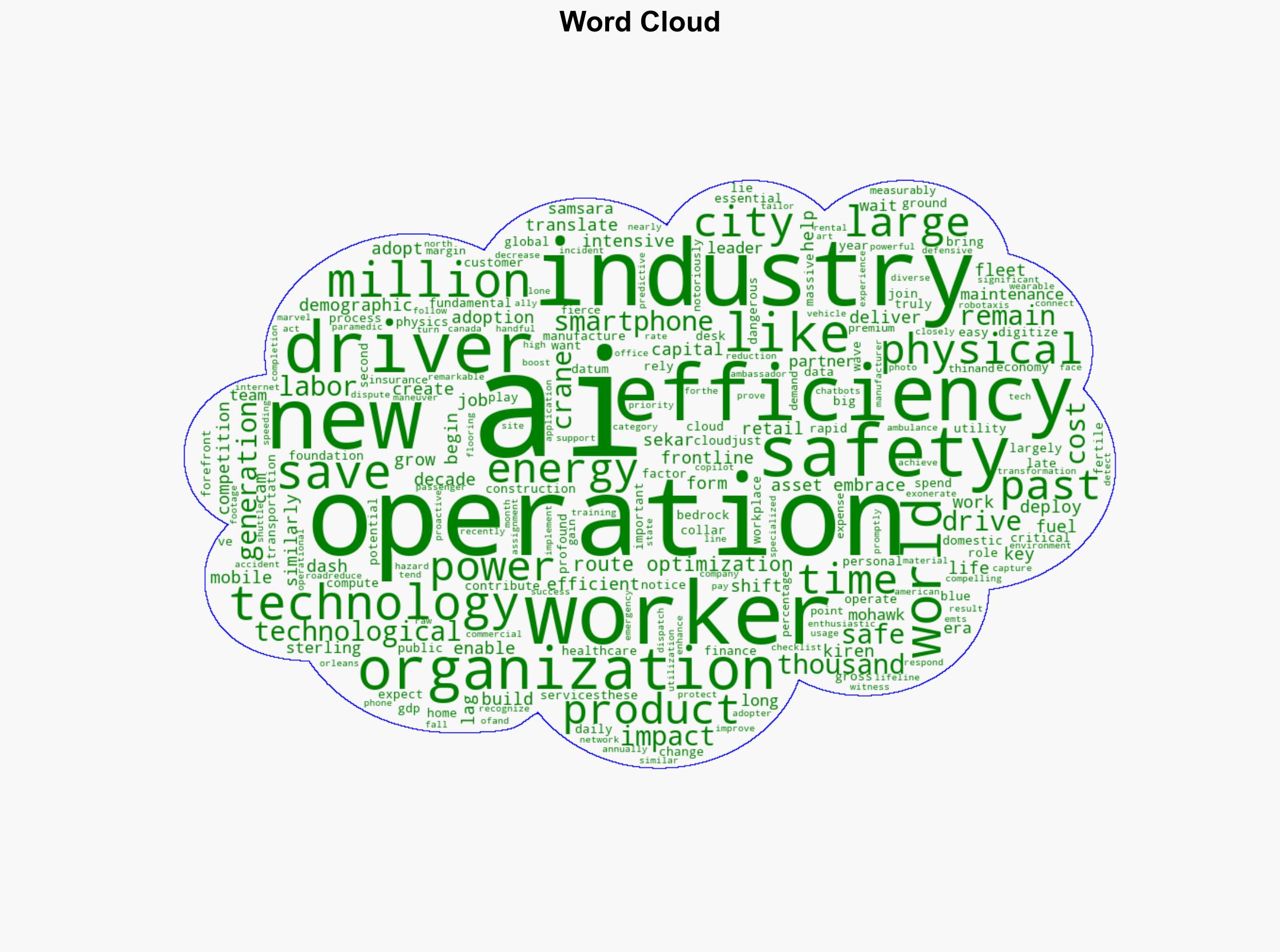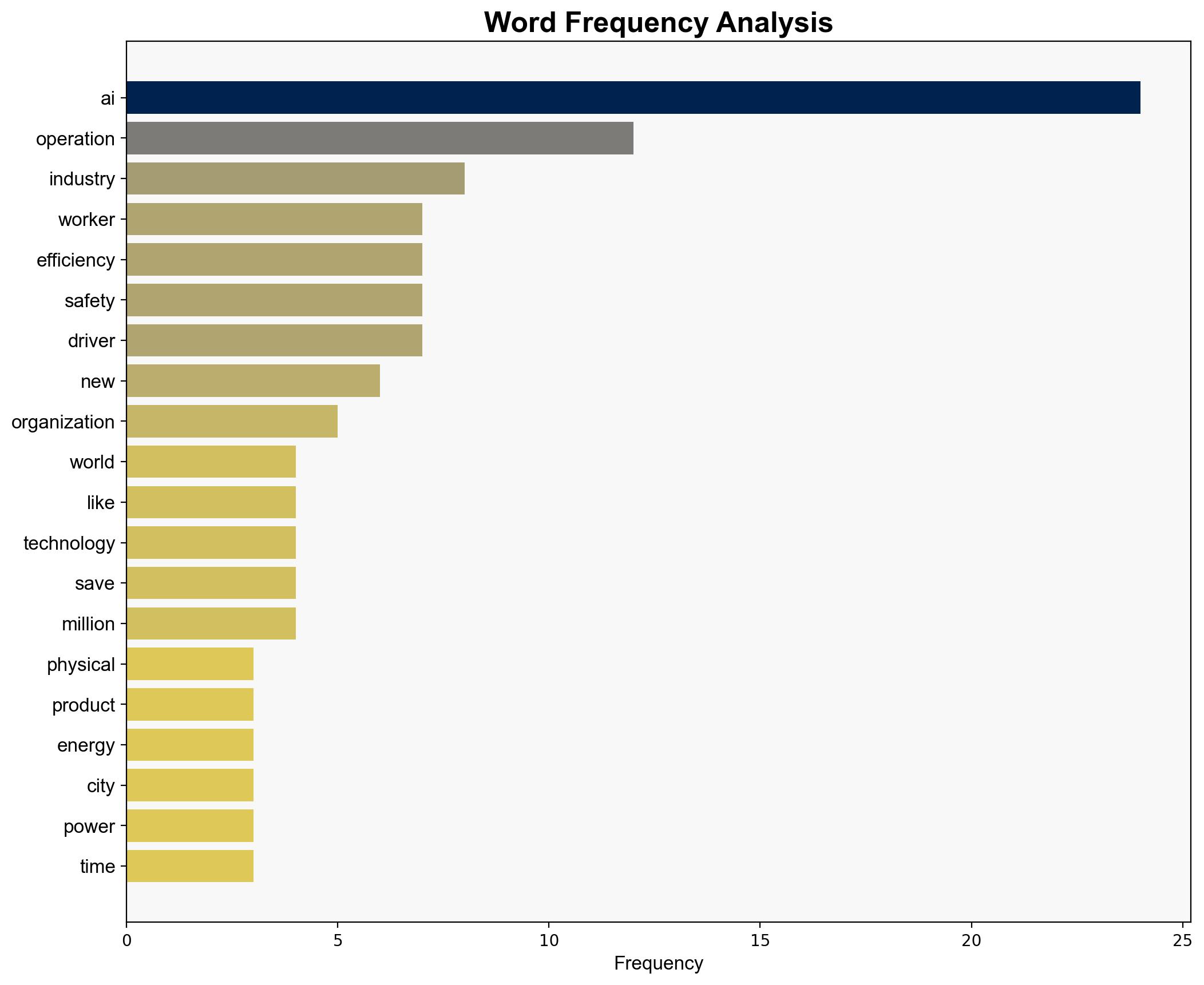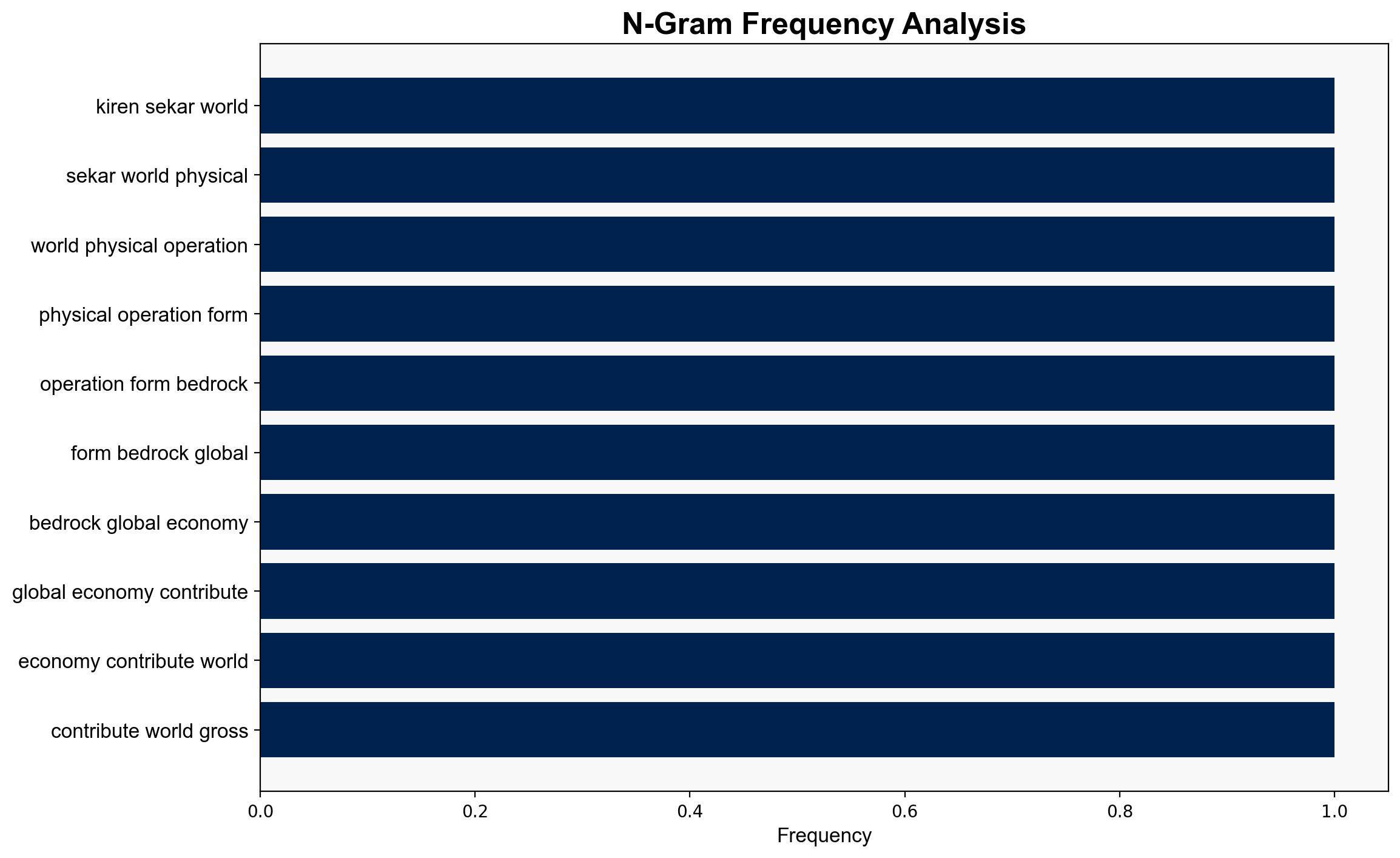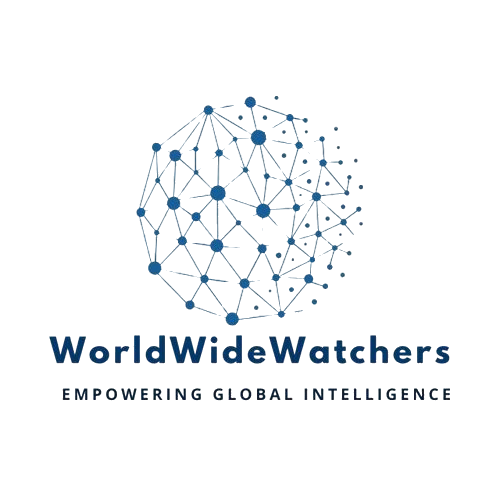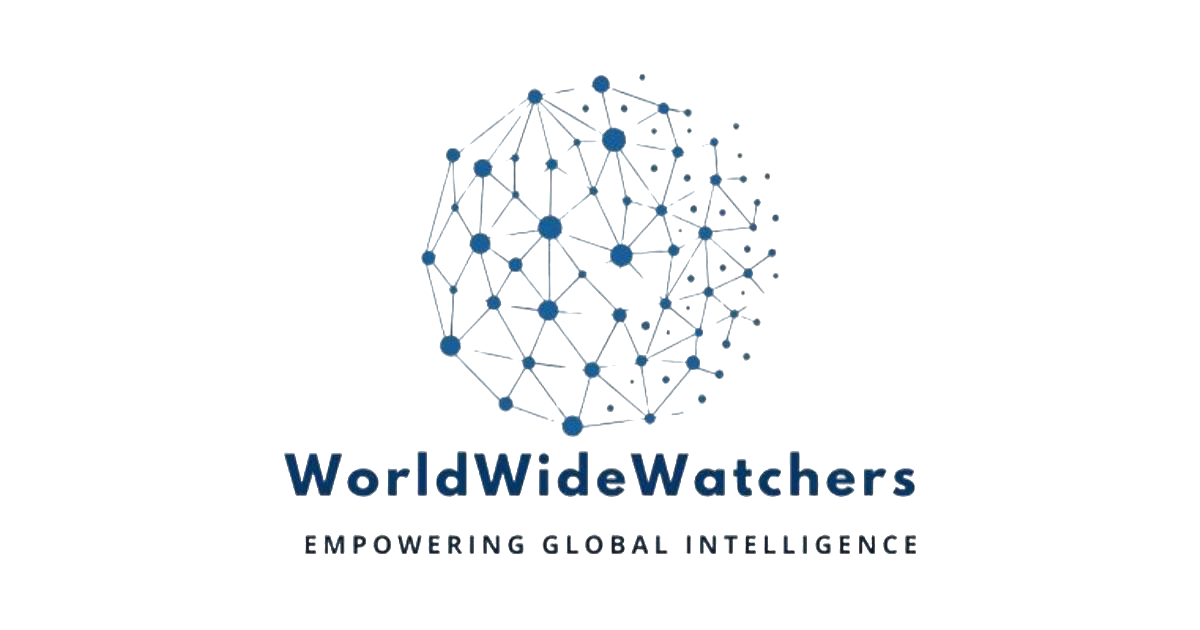How Physical Operations Organizations Are Using AI to Protect Workers and Increase Efficiency – SPONSOR CONTENT FROM SAMSARA – Harvard Business Review
Published on: 2025-07-01
Intelligence Report: How Physical Operations Organizations Are Using AI to Protect Workers and Increase Efficiency
1. BLUF (Bottom Line Up Front)
The integration of Artificial Intelligence (AI) in physical operations sectors such as manufacturing, construction, and transportation is significantly enhancing worker safety and operational efficiency. AI technologies, including AI-powered dash cams and predictive maintenance systems, are leading to measurable reductions in accidents and cost savings. Organizations are increasingly adopting AI to meet the expectations of a tech-savvy workforce and to remain competitive in industries with thin profit margins.
2. Detailed Analysis
The following structured analytic techniques have been applied to ensure methodological consistency:
Adversarial Threat Simulation
Organizations should simulate potential cyber threats to AI systems to identify vulnerabilities and enhance resilience strategies, especially as AI becomes integral to operations.
Indicators Development
Develop indicators to monitor AI system performance and detect anomalies that could signal operational disruptions or safety risks.
Bayesian Scenario Modeling
Utilize probabilistic models to predict potential failures in AI systems and develop contingency plans to mitigate operational risks.
Network Influence Mapping
Assess the influence of AI adoption on industry networks and stakeholder relationships to understand broader impacts on operational dynamics.
3. Implications and Strategic Risks
The rapid adoption of AI in physical operations poses strategic risks, including potential cybersecurity threats and workforce displacement. While AI enhances efficiency, it also introduces vulnerabilities that could be exploited by cyber adversaries. Additionally, the shift towards AI-driven operations may lead to job restructuring, necessitating workforce retraining and adaptation.
4. Recommendations and Outlook
- Implement robust cybersecurity measures to protect AI systems from potential threats.
- Invest in workforce training programs to equip employees with skills needed for AI-integrated environments.
- Conduct scenario-based planning to prepare for potential disruptions, ensuring continuity and resilience.
- Monitor AI system performance and adjust strategies to optimize safety and efficiency continuously.
5. Key Individuals and Entities
Kiren Sekar
6. Thematic Tags
AI integration, worker safety, operational efficiency, cybersecurity, workforce adaptation
